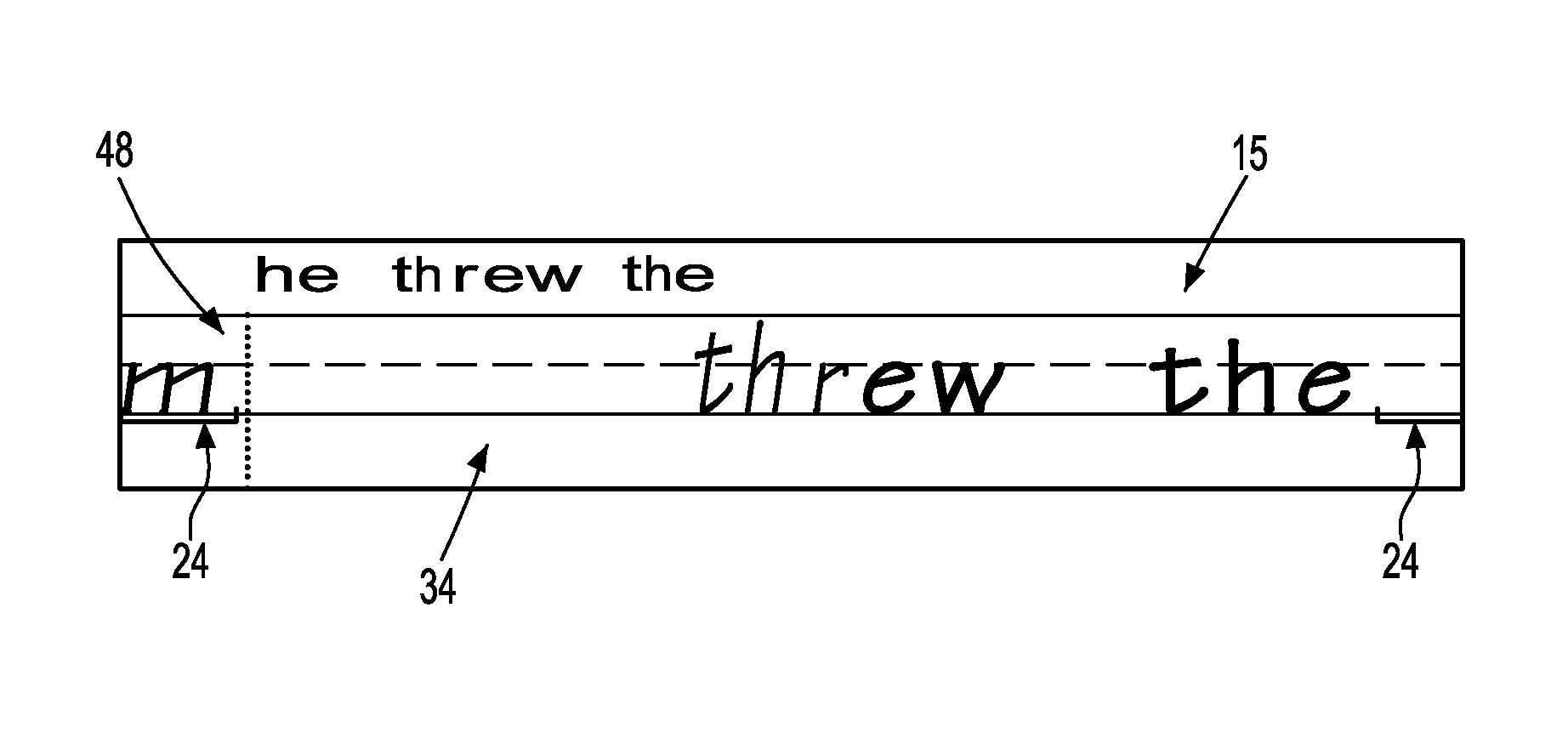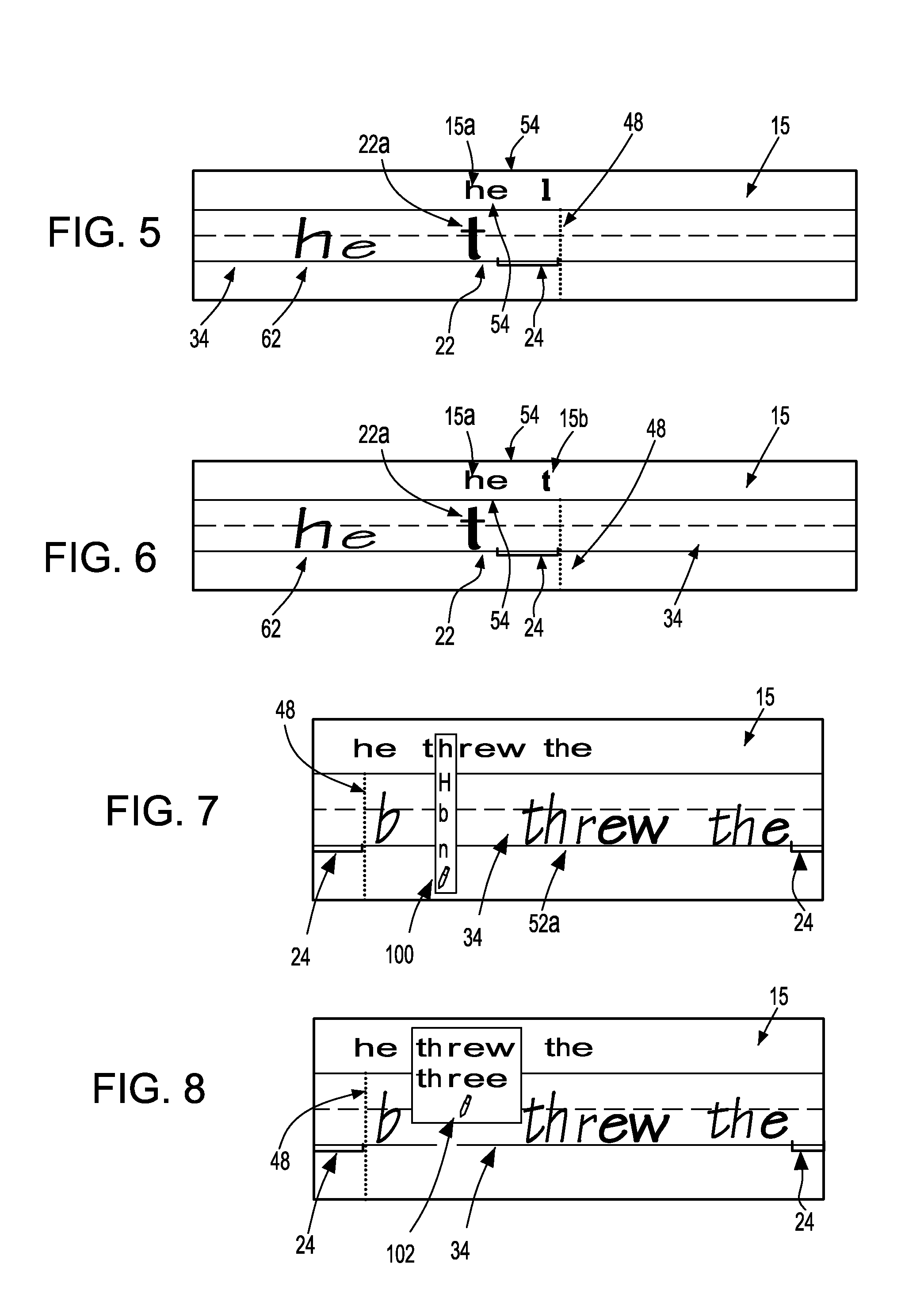Handwriting recognizer user interface methods
a recognition device and handwriting technology, applied in the field of handwriting recognition devices, can solve the problems of difficult process of selecting a narrow character, inability to easily review and confirm that output is correct, and inability to easily correct errors
- Summary
- Abstract
- Description
- Claims
- Application Information
AI Technical Summary
Problems solved by technology
Method used
Image
Examples
Embodiment Construction
[0021]An exemplary embodiment of a handwriting recognizer user interface 10 according to the present invention is shown in FIG. 1. The user interface 10 includes an Output Recognition Buffer (ORB) display 15, a stroke entry and display field 20, a new character entry field bracket 24 for indicating character spacing using the bracket 24, and a new word field 30 separated by a word spacing indicator 48. The stroke entry and display field 20 further includes a current character stroke set 22a in a current character field 22 at the baseline 34. The ORB display 15 includes a recognized current character display location 15b containing the current recognized character “h”15a. A stroke is defined herein as the act of writing with a stylus, which can be digitally represented in the display 15.
[0022]Referring to FIG. 1, the current character stroke set 22a is displayed in the stroke entry and display field 20. The ORB display 15 is generated from computer memory configured as an Output Reco...
PUM
 Login to View More
Login to View More Abstract
Description
Claims
Application Information
 Login to View More
Login to View More - R&D
- Intellectual Property
- Life Sciences
- Materials
- Tech Scout
- Unparalleled Data Quality
- Higher Quality Content
- 60% Fewer Hallucinations
Browse by: Latest US Patents, China's latest patents, Technical Efficacy Thesaurus, Application Domain, Technology Topic, Popular Technical Reports.
© 2025 PatSnap. All rights reserved.Legal|Privacy policy|Modern Slavery Act Transparency Statement|Sitemap|About US| Contact US: help@patsnap.com



